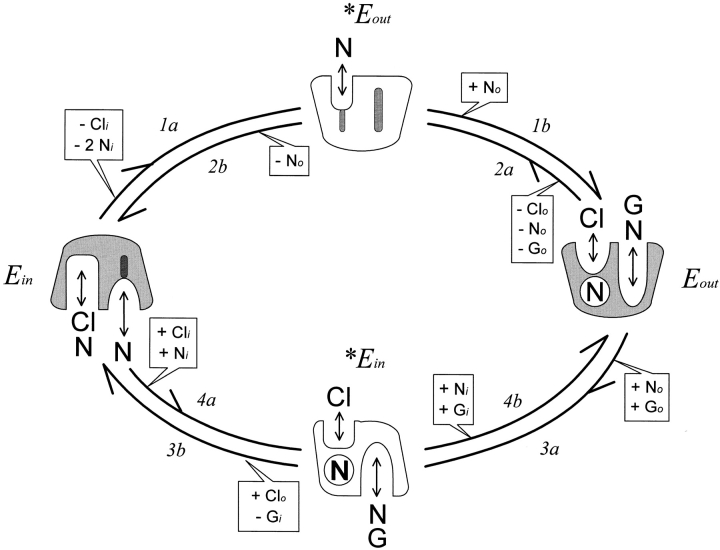
Figure 1. GAT1 cotransport model. The transporter cartoons are all oriented with the extracellular side facing upward. Substrate dependencies of each reaction are indicated in a box. (−) A reaction can occur only when the given substrate is not bound; (+) a reaction can occur only when the given substrate is bound. The model assumes the existence of two stable GAT1 states (Ein and Eout) and two transitional GAT1 states (*Ein and *Eout). In the Ein state, one Cl− (Cl) and two Na+ (N) can bind sequentially from the cytoplasmic side. When Ein binding sites are empty, a Na+ binding site can open to the extracellular side to form the *Eout state. One extracellular Na+ ion can be bound in the *Eout state and occluded into the transporter, thereby forming the Eout state. The Eout state can bind sequentially one Na+, one Cl−, and one GABA (G). When the Eout binding sites are fully occupied, a transition to the *Ein state can occur in which GABA and one Na+ can dissociate to the cytoplasmic side. Further opening of binding sites returns transporters to the Ein state. Conformational changes of the transitional states (1b, 2b, 3b, and 4b) are assumed to take place at infinite rates. See text for further details.
Image published in: Hilgemann DW and Lu CC (1999)
© 1999 The Rockefeller University Press. Creative Commons Attribution-NonCommercial-ShareAlike license
Permanent Image Page
Printer Friendly View
XB-IMG-121037